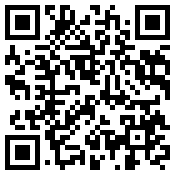![]()
 I just published a new application to the Android Market: httpmon. In a nutshell, it allows you to monitor the status of any number of HTTP servers. A monitor is made up of 1) a request which describes how to contact the server, 2) one or more conditions that must hold true to consider the server “valid”, and 3) zero or more actions to take if the server is “invalid”.
I just published a new application to the Android Market: httpmon. In a nutshell, it allows you to monitor the status of any number of HTTP servers. A monitor is made up of 1) a request which describes how to contact the server, 2) one or more conditions that must hold true to consider the server “valid”, and 3) zero or more actions to take if the server is “invalid”.
This was another learning exercise. I wanted to play around with how I would structure an extensible object model in Android. The app source is structured so that the conditions and action class trees are easily extensible at both the model and view level to add new types of conditions and actions. I’m quite happy with how well it came out in that regard. None of this is probably visible from using the app however.
I hope that at least some people find this useful, as I’m looking forward to receiving input for new types of conditions and actions.
Supported conditions,
- ping
- response time
- response code
- content contains (substring, wildcard, or regex match)
- header container (substring, wildcard, or regex match)
Supported actions,
- notification (alert sound, flash, and / or vibrate)
- send SMS
I wanted to have a “send email” action, but it turns out that there is no way to send an email programmatically, on behalf of the user, with Android. I am not sure why they would let an app send an SMS on behalf of the user, but not an email. An SMS seems more dangerous actually. Of course, I could have used JavaMail, but that means gathering an SMTP server and port, and supporting credentials. Most users will lack the will or the way to set that up I think.



 Posted by Jeffrey Blattman
Posted by Jeffrey Blattman 








